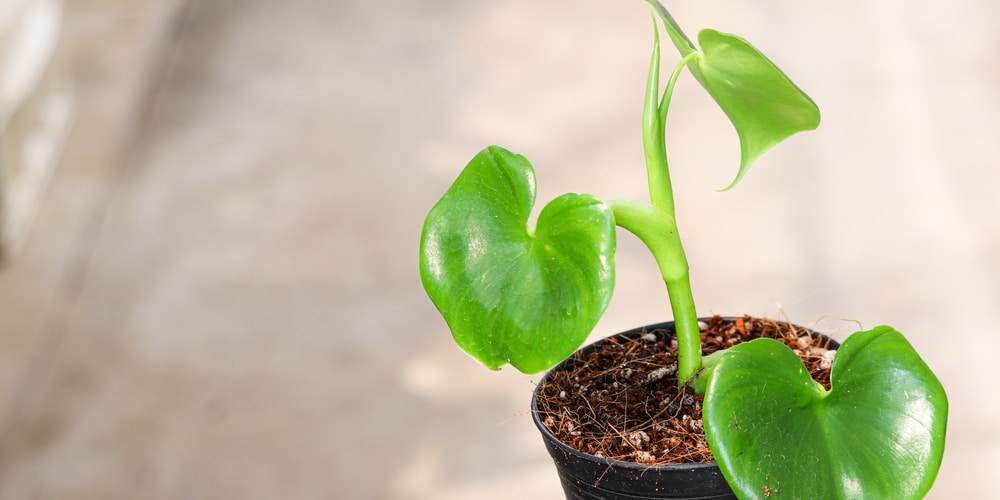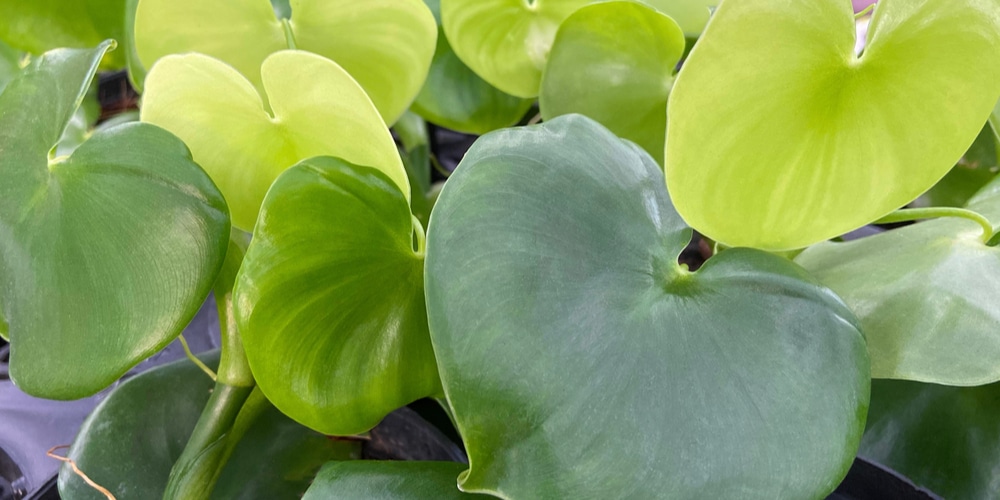Philodendron Grazielae is an evergreen, perennial climbing plant with woody stems. It has small heart-shaped leaves and is native to Brazil. Typical habitat for the plant includes tropical rainforest areas in South America. In its native environment, the plant is often found growing on trees, climbing up to 20 feet high.
The Philodendron Grazielae is a popular house plant that’s easy to care for and looks beautiful. It can also be grown outdoors in USDA zones 9 to 11. Making sure your Philodendron Grazielae is in the right environment is crucial for its growth and care. Let’s look at how to grow and care for a Philodendron Grazielae.
What is a Philodendron Grazielae?
Philodendron Grazielae is a large shrub-like plant with an upright stem. It has a bushy appearance with multiple branches that form into dense clumps of foliage. The leaves are unique as they are small and heart-shaped. This plant is evergreen with shiny, dark green foliage.
Although this is a climbing vine, it generally ends up short and bushy when grown as a houseplant. If you want it to crawl up a tree or another climbing plant, tie it in place with soft twine.
The Philodendron Grazielae has aerial roots that need to be kept moist, or they’ll dry out and die. The good news is, if your plant gets too leggy or is growing too far away from the trunk of another plant and is unable to climb, you can take a cutting with an aerial root and replant it. This will allow you to grow a new plant that will bush out instead of climb upwards.
Philodendron Grazielae can be grown in a hanging basket, outdoors against a fence or tree, or in a pot with a moss pole as support.
The Philodendron Grazielae is part of the Araceae family, which has over 400 species. Like all philodendrons, this variety is toxic to humans and animals if ingested, so it should be kept out of the reach of young children and pets.
How to care for a Philodendron Grazielae
Philodendron Grazielae plants are easy to care for and have similar needs as other types of philodendron. As they are tropical plants, they like warm conditions and high humidity. Here are some tips to help you grow a thriving Philodendron Grazielae:
Sunlight needs
Philodendron Grazielae prefers light shade when young but will need to be moved into a brighter position in indirect sun when older. In its natural environment, the plant climbs trees and does not receive much sunlight. Don’t leave your plant in the full sun, or its foliage will get sunburnt. Using a shade cloth can help to prolong the lifespan of your plant.
Watering Requirements
It’s best to keep the soil moist but not wet. Watering once a week is enough for this plant during its growing season. In the winter, you can reduce watering but maintain humidity.
Be careful not to over-water your plant, or its leaves will turn brown at the edges and drop off. Root rot may also occur.
Soil
The Philodendron Grazielae needs rich soil with excellent drainage, retaining moisture but letting excess water flow through the drainage holes. You can add a layer of peat or sphagnum moss to the top of the dirt if you like; this helps keep in some moisture and adds more acidity to the soil, which Philodendrons love. It’s recommended that your plant be re-potted every other year using soil with a pH range between 5.0 and 6.0.
You should only report your Philodendron Grazielae when it appears root-bound. Hold the plant pot in one hand and turn it upside down to check if this is the case. If the plant comes out of its pot, then it is root-bound. You can help avoid root rot by placing a layer of gravel in the base of a plastic pot before adding the compost.
Humidity
Philodendron Grazielae likes a humidity level of around 70%. This can be created by using a pebble tray under the pot or misting the leaves regularly.
Fertilization
In terms of feeding, a balanced liquid fertilizer can be used once per month during spring and summer when the plant is actively growing.
Pruning
You can remove dead leaves from your Philodendron Grazielae to keep it looking tidy.
Conclusion
Philodendron Grazielae are lovely plants with heart-shaped foliage. They require regular watering, an even amount of sunlight, and a balanced fertilizer during spring and summer. Increase humidity by misting or placing the pot on top of a pebble tray.

